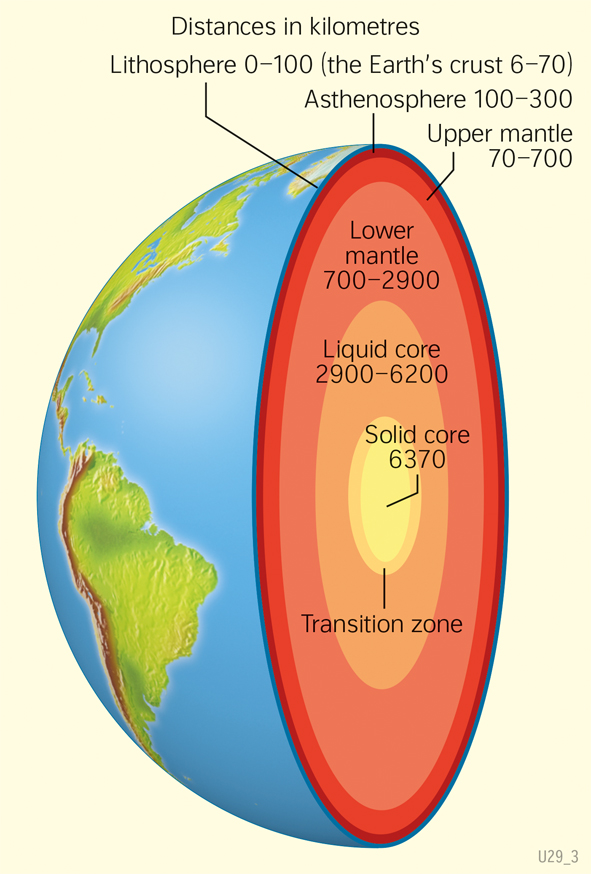Shells of the Earth
Plate tectonics
978-3-14-100890-6 | Page 14 | Ill. 2

Overview
The illustration shows the inner structure of the Earth. Like an onion, the Earth is made up of different shells.
Lithosphere
The uppermost shell is the Earth's crust, from which the continents and the seabed were formed. Directly below the Earth's crust is the Earth's mantle, which is divided into an upper and a lower mantle. The Earth's crust and the uppermost layer of the mantle form the lithosphere (solid rock shell). Under the oceans, the lithosphere is about 50 kilometres thick, in the area of the continents it is about 110 kilometres thick. This uppermost shell of the Earth forms a solid, rigid crust that "floats" on the viscous layer below.
Upper and lower earth mantle
The increasing pressure at greater depths in the upper mantle causes the rock to solidify again. Because of the heat of the lower mantle, huge chunks of rock sink from the cooler layers of the Earth's mantle. At the same time, rock masses that were heated up at the Earth's core, which begins below the mantle, rise again. This creates a cycle that lasts for many millions of years.
Asthenosphere
The Earth's second shell, called the asthenosphere, is located directly beneath the rigid lithosphere. Unlike the lithosphere, however, the asthenosphere is viscous. The temperature is also already beginning to rise here: At a depth of 400 kilometres, rock is melted at just under 1300°C, so that the asthenosphere lies below the lithosphere like a liquid sliding layer.
Liquid and solid earth's core
In the outer, liquid core of the Earth, the components that have melted here, such as nickel or iron, are constantly mixed. Since the liquid in the outer core is electrically conductive, the Earth's magnetic field is generated - just like in a dynamo. In the inner core, the metallic material is pressed together again into a solid ball by the enormously high pressure. Iron from the liquid core is constantly deposited on the inner, solid core. This process releases large amounts of energy and heat. This heat is constantly released from the Earth's interior to the outside.




